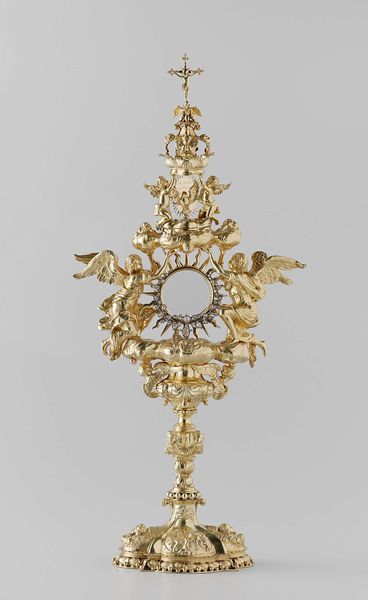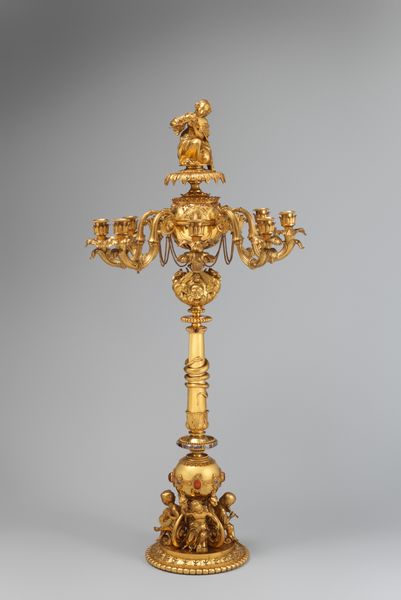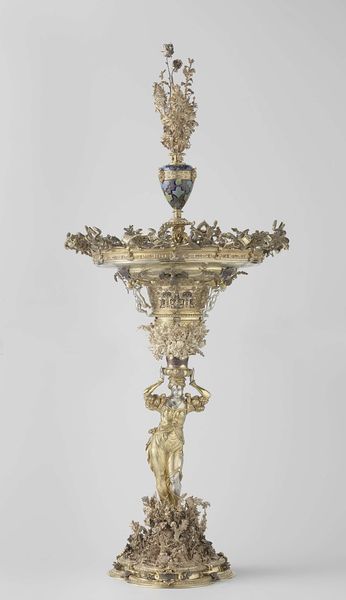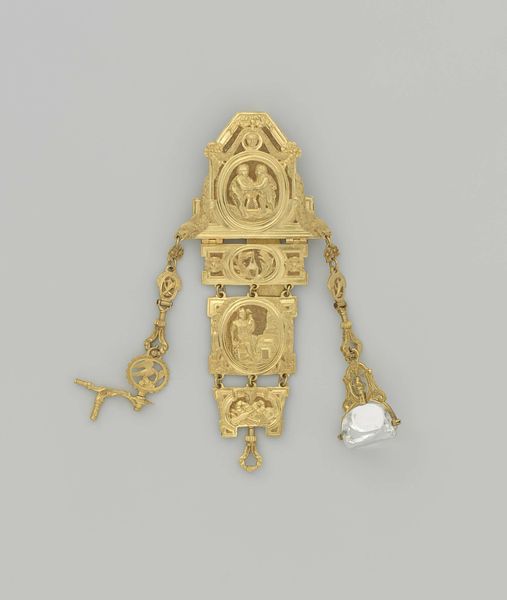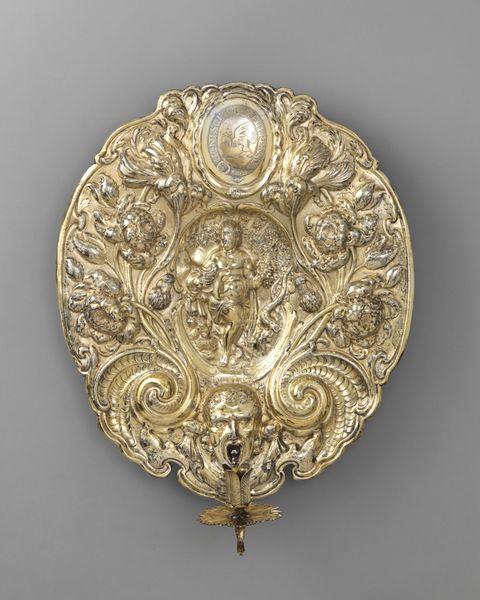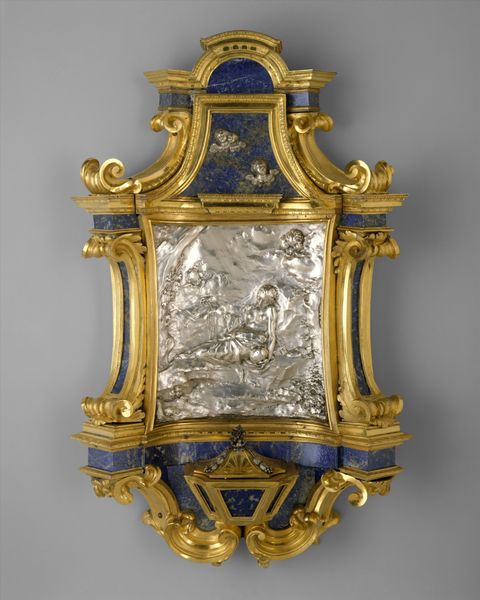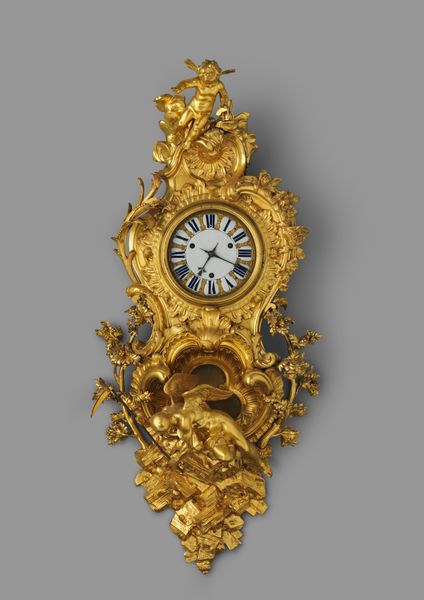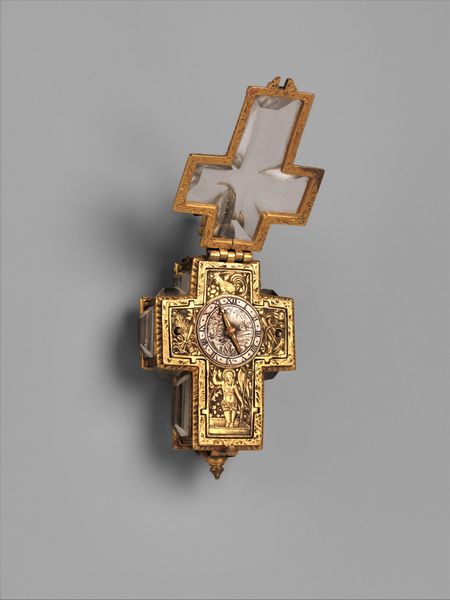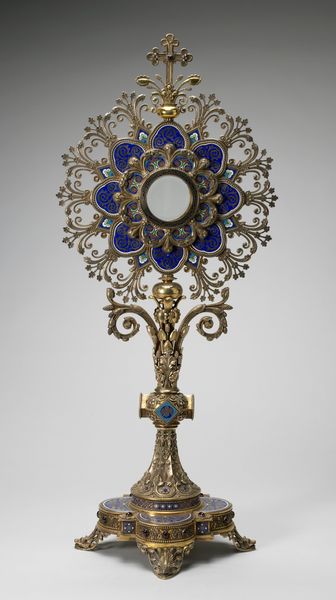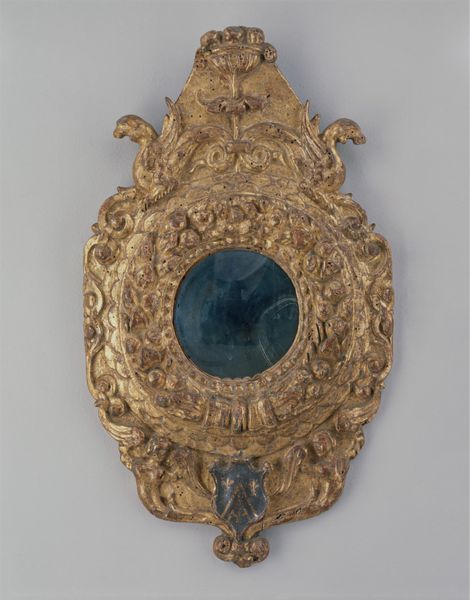
gold, glass, sculpture, wood
#
gold
#
furniture
#
sculptural image
#
figuration
#
glass
#
sculpture
#
wood
#
decorative-art
#
rococo
Dimensions: 147.3 × 64.8 × 53.3 cm (58 × 25 1/4 × 21 in.)
Copyright: Public Domain
Editor: Here we have Jean Pierre Latz's "Wall Clock," created around 1735 to 1740, a dazzling mix of gold, glass, and wood sculpture. The first thing that strikes me is just how ornate it is; it feels like pure luxury frozen in time. How do you interpret this work? Curator: It's excess manifested! This clock, emblematic of the Rococo style, isn't merely about telling time; it's a statement of power and privilege. Consider the context: pre-revolutionary France, a society deeply divided. The aristocracy indulged in lavish displays like this while poverty reigned. The gilded surfaces speak to that detachment, almost a defiant flaunting of wealth. The allegorical figures suggest whose time was considered important, and who got to measure it. Does the sculpture itself remind you of anything? Editor: Now that you mention it, it's theatrical! That figure perched on top, the flowing lines...it feels like something you’d see in an opera. Curator: Exactly! Rococo was a highly performative style reflecting a highly performative court culture. How might understanding that influence how we view objects like this today? Is it merely beautiful, or does it carry a more complex, even problematic, history? Editor: I hadn't thought about it that way. Seeing it as a historical artifact of inequality changes everything. It's beautiful, but it’s also a symbol of a system that oppressed so many. Curator: Precisely. Recognizing that tension – the beauty alongside the injustice – is crucial for engaging with art from this period. It forces us to confront the legacy of power and privilege that continues to shape our world. Editor: It makes me see the artwork – and art history itself – as so much more dynamic, a conversation rather than just a display. Curator: And a vital one!
Comments
No comments
Be the first to comment and join the conversation on the ultimate creative platform.
